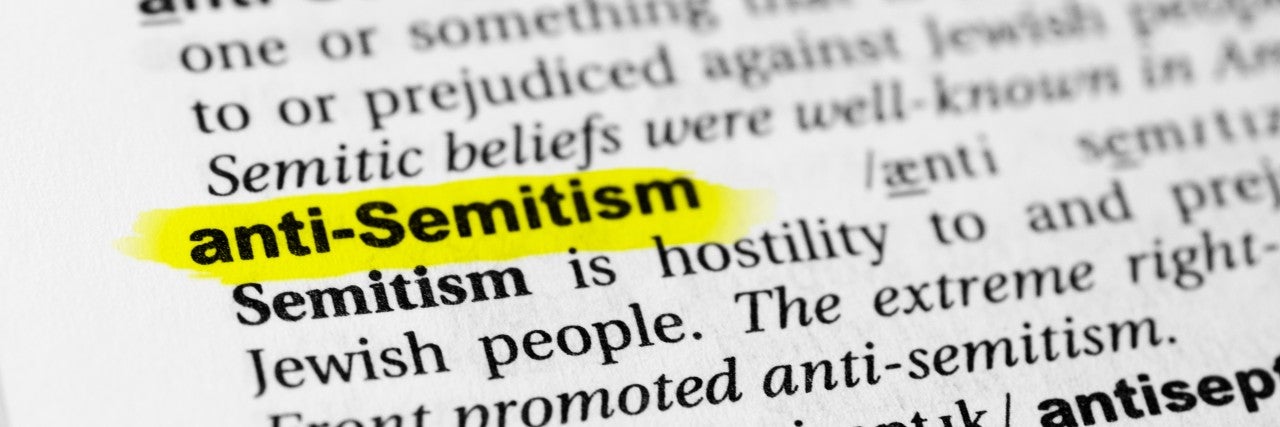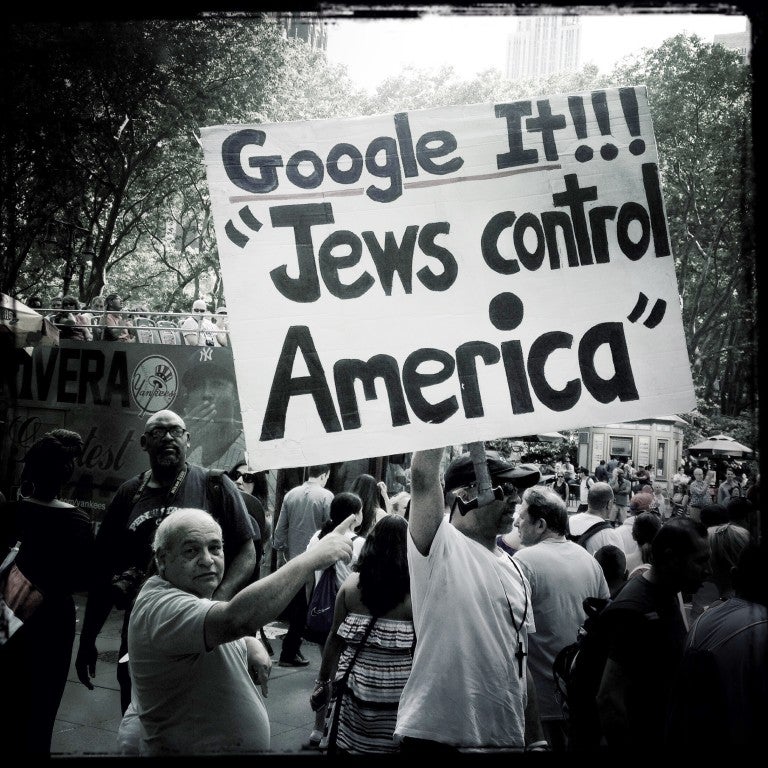March 27, 2023
According to AJC’s State of Antisemitism in America Report 2023, nearly a third of Americans are either unsure of what antisemitism means or never heard the term. That lack of knowledge extends beyond national borders. To even begin to solve the problem of antisemitism, there must be clarity about what it is and what it isn’t.
That’s why in 2016 the International Holocaust Remembrance Alliance (IHRA) built international consensus around a non-legally binding definition that offers clear guidelines and guardrails. Since then, the IHRA Working Definition of Antisemitism has been endorsed as a tool by more than 1,100 entities, including dozens of countries (click here to see the most recent list), the European Parliament and the Council of the European Union, the United Nations Secretary General, the UN Special Rapporteur on Freedom of Religion and Belief, and the Secretary General of the Organization of American States (OAS).
In the U.S. alone it has been adopted or endorsed by a majority of states and the District of Columbia, the Biden administration, dozens of state and local governments, and institutes of higher education as an essential tool to clarify what antisemitism looks and sounds like in the 21st century.
Below are answers to questions about the definition:
1. Does the IHRA Working Definition censor criticism of Israel? Does it serve to shield Israel from criticism?
Absolutely not. The IHRA definition does not prohibit anyone from exercising their First Amendment rights. The definition is a tool to identify and address antisemitism—nothing more. In fact, the IHRA definition expressly recognizes that criticism of Israel’s policies and politics, like criticism leveled at other countries’ policies, cannot be regarded as antisemitic.
Test your Knowledge: How are American Jews Experiencing Antisemitism?
It offers 11 examples, seven referring to Israel that, depending on the context, could become antisemitic. But these examples are not etched in stone. They simply serve as guidelines, so critics can distinguish between criticizing national policies (totally acceptable) and denying the Jewish people’s right to self-determination (not acceptable). In fact, Spain, Sweden, and other countries that have delivered stinging criticism of the Jewish state have embraced the definition as a useful tool.
Isolated individuals have attempted to distort the definition to shut down speech. But any tool can be misused and it’s important to speak out against those exceptions when they occur.
That said, the definition on its own is not legally binding and does nothing to prohibit any speech, even the most hateful.
2. Are there other definitions of antisemitism that serve as sufficient alternatives?
To discredit the IHRA definition, opponents have proposed the Jerusalem Declaration on Antisemitism (JDA) and the Nexus Document. But no government entity has endorsed these definitions. Only the IHRA definition has been widely accepted by governments and institutions worldwide. Why?
The IHRA definition offers succinct explanations and practical examples that can help a police officer on the street recognize antisemitism as well as a graduate student in a classroom. The other definitions are inadequate. Here’s why:
The JDA defends the tactic of holding Israel to a double standard by requiring behavior not expected of any other democratic nation when it’s based on an outsized concern about Jewish power. It also defends the anti-Israel Boycott, Divestment and Sanctions (BDS) movement whose founder has said he wishes to dismantle the Jewish state, and which ostracizes Israeli civil society, including cultural and academic institutions, businesses, and sports teams, which play no role in government policy. Some of the original signatories of the JDA included anti-Israel activists and antisemites, like Richard Falk, a former UN rapporteur on Palestinian rights, who has compared Israel to Nazi Germany and spread conspiracy theories about the 9/11 terrorist attacks.
The Nexus Document is not a free-standing definition. It’s merely one point of view about how to interpret the IHRA definition. It falsely labels Zionism as nothing more than a political movement, rather than the 2,000-year-old tangible expression of the Jewish people’s yearning to return to their homeland. It also prioritizes intention over impact, enabling purveyors of antisemitism to say “Sorry, not sorry,” rather than try to comprehend why their speech or actions are hurtful.
For these reasons, the IHRA definition has been adopted by more than 1,100 entities as the most useful resource for helping to identify anti-Jewish prejudice and hatred.
3. Why do some people say even the author of the IHRA definition doesn’t support it?
Until 2005, most of the monitors of the European Monitoring Centre on Racism and Xenophobia (EUMC) lacked any definition of antisemitism that could guide their efforts to accurately track hate crimes. Meanwhile, amid the Middle East conflict, violent attacks against Jews were getting brushed off as political protests. Neither government officials nor law enforcement labeled these aggressions as antisemitic.
Ken Stern, an AJC staff member at the time, collected and sorted through definitions of antisemitism from experts around the world. He combined multiple draft proposals. Then, he and a dozen experts around the world, including other AJC staff members, collaborated to reach a consensus – a definition on which they all agreed. That Working Definition was then presented to and adopted by the EUMC and later adopted in a slightly modified form by IHRA.
“It was important for authorities to understand that what might appear to be a political activity, simply because it references Israel or Zionists, shouldn’t obscure the fact that these violent acts directed at Jews were a form of antisemitism,” said Rabbi Andrew Baker, AJC’s Director of International Jewish Affairs, who led negotiations with the EUMC on behalf of international Jewish organizations.
In 2016, IHRA built consensus around the definition and adopted it as a tool to help people recognize and address antisemitism. Hundreds of entities from governments and universities to sports clubs and corporations have embraced it as well.
Stern has voiced concern about the many uses of a definition that he says was created solely to help agencies collect data. His point of view has been embraced by those who seek to discredit the definition. But Stern stands out as a lone critical voice among the dozen of experts that contributed to the definition’s creation.
4. Israel, Israel, Israel. Does the IHRA Working Definition only focus on antisemitism related to Israel?
No. The very first example listed in the IHRA Working Definition of Antisemitism is, “Calling for, aiding, or justifying the killing or harming of Jews in the name of a radical ideology or an extremist view of religion.” Read about the different sources of antisemitism in 10 Tough Questions on Antisemitism Explained.
Another example includes “Making mendacious, dehumanizing, demonizing, or stereotypical allegations about Jews as such or the power of Jews as collective — such as, especially but not exclusively, the myth about a world Jewish conspiracy or of Jews controlling the media, economy, government or other societal institutions.”
Israel has also become code for Jews as a collective, and symbols and images associated with classic antisemitism such as blood libel to characterize Israel or Israelis have seen a resurgence.
Since medieval times, conspiracy theories have attributed inordinate power to Jews. It’s a form of antisemitism that can exist and take root equally in places where Jews may be numerous, such as Israel, or where they are few in number, which is many places around the globe. Read about the bevy of antisemitic tropes and conspiracy theories in AJC’s Translate Hate glossary.
5. Does the Working Definition conflate Judaism with Zionism?
The Working Definition does not equate the religion of Judaism with Zionism. In fact, some Haredim are Jewish and against Zionism for religious reasons. They are not antisemites. Palestinians who seek a bi-national solution and not the expulsion of the Jews are not antisemitic either.
But when Jews are singled out for having a state that’s ethnically based, and others are not, that’s antisemitism. When Jews are targeted by people who wish Israel did not exist, that’s antisemitism. Full stop. It’s not antisemitic to say that Israeli government policy is racist; but to call the Jewish state a racist state by design is antisemitic. Why? Because it implies that Israel was illegitimate from the start and doesn’t have a right to exist in the society of nations, just as some types of antisemitism claim that Jews don’t have a right to exist in society. In fact, AJC’s State of Antisemitism in America 2023 Report found that 85% of American Jews and 84% of the U.S. general public believe the statement “Israel has no right to exist” – the foundational core of anti-Zionism – is antisemitic.
Similarly, to say Israel’s founding fathers wholly dispossessed Palestinians oversimplifies history to delegitimize the Jewish state. A Jewish state in Israel never precluded a Palestinian state alongside her, and Jewish organizations collaborated with the United Nations Special Committee on Palestine to make both a reality.
But a two-state solution must be the result of a directly negotiated settlement between both parties, not an external pressure campaign that delegitimizes the Jewish state.
Five of the six examples that mention Israel also mention Jews; four of them deal specifically with the way in which explicitly antisemitic ideas can be disguised in Israel-related language. These include examples such as “accusing the Jews as a people, or Israel as a state, of inventing or exaggerating the Holocaust” or “holding Jews collectively responsible for actions of the state of Israel.”
But the Working Definition also makes it clear that these examples always depend on context.





